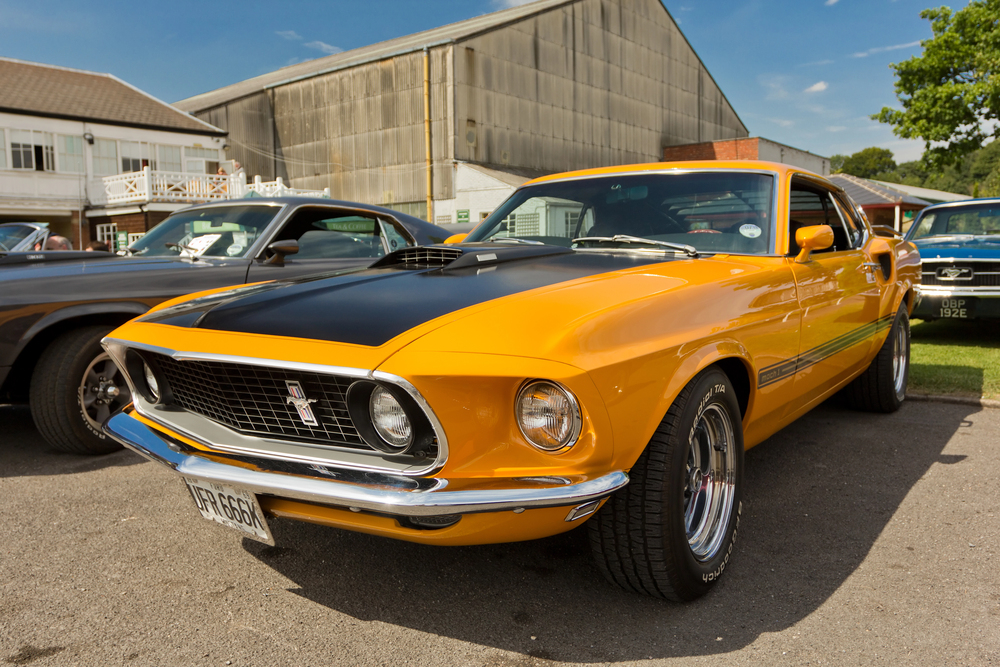The automotive industry is undergoing a seismic shift as technology companies push deeper into vehicle innovation. Traditional automakers are no longer just competing with each other but are now in a fierce battle with tech giants seeking to revolutionize the driving experience. From autonomous driving to in-car software ecosystems, the struggle for dominance is reshaping the future of mobility. Here are 11 key ways this competition is unfolding and what it means for the future of transportation.
Who Will Own the Future of Mobility?

At the core of this battle is the fundamental question of who will shape the future of transportation. Automakers bring decades of engineering expertise, while tech giants specialize in software and AI innovation. The convergence of these industries is forcing both sides to adapt rapidly, and the outcome will redefine the auto industry for decades to come.
The Race for Autonomous Dominance

Automakers and tech companies are in a high-stakes battle to develop fully autonomous vehicles. While car manufacturers integrate self-driving features into their existing models, tech giants like Google’s Waymo and Apple are designing vehicles from the ground up. This divergence in approach is creating a clash between traditional engineering and cutting-edge AI.
Data is the New Fuel

Tech companies thrive on data, and connected cars generate vast amounts of it every second. Automakers are realizing that controlling this data is just as crucial as building the car itself. However, companies like Google, Apple, and Amazon want access to vehicle-generated data to refine their AI-driven services, leading to a heated struggle over data ownership.
AI-Powered Predictive Maintenance

AI-driven diagnostics are making vehicle maintenance more efficient, with tech companies pioneering software that predicts repairs before breakdowns occur. Automakers want to integrate this technology without relying entirely on external software. The future of vehicle health monitoring will depend on which industry takes the lead in predictive AI advancements.
Related: 11 Youngest Formula 1 Drivers In The History Of Car Racing
The EV Charging Network War

The competition to establish the largest and most reliable EV charging network is fierce. While Tesla’s Supercharger network leads in efficiency, other tech firms and energy companies are investing in competing infrastructures. Automakers must decide whether to build their own networks or partner with existing providers to secure dominance in the charging sector.
Related: 11 Most Dominant McLaren Drivers Who Ruled The Track
The Push for Biometric Security

Facial recognition, fingerprint scanning, and voice authentication are becoming part of the vehicle security ecosystem. While automakers focus on physical safety, tech giants aim to integrate AI-driven biometrics into the driving experience. The question of who owns and protects this sensitive data remains a major point of contention as privacy concerns grow.
Related: 13 Legendary Car Brands That Refuse To Build Electric Vehicle
Augmented Reality and Heads-Up Displays (HUDs)

Tech firms are developing augmented reality interfaces that transform windshields into interactive displays. Automakers want to control this emerging technology to create safer driving experiences. As AR technology advances, the battle over its implementation in vehicles will shape the future of driver engagement and navigation systems.
Related: 11 Shocking Ways In-Car Entertainment Has Changed From CDs to Streaming Apps
The Threat of Direct-to-Consumer Sales Models

Tesla’s direct-to-consumer model disrupted the traditional dealership network, a change tech companies want to replicate. Legacy automakers are trying to hold on to their dealership structures, fearing loss of control over pricing and customer relationships. As more companies explore online-only vehicle sales, this could redefine how consumers buy cars in the future.
Related: 12 Insane Ways Wireless Charging And Smart Dashboards Are Taking Over New Cars
Smart Cities and Vehicle-to-Infrastructure (V2I) Communication

Tech companies are investing in smart city initiatives that allow vehicles to communicate with traffic lights, road sensors, and other infrastructure. Automakers must decide whether to integrate these systems or develop their own proprietary solutions. The battle for control over vehicle-to-infrastructure communication could shape the future of urban mobility and traffic management.
Related: 11 Startling Reasons People Still Don’t Trust Self-Driving Cars
Subscription-Based Features

Tech companies have popularized subscription-based services, and now automakers are exploring similar revenue streams. Instead of a one-time purchase, features like heated seats, advanced navigation, and autonomous driving modes are being locked behind paywalls. Consumers are pushing back against this trend, leading to an ongoing debate about the future of vehicle monetization.
Related: 13 Jaw-Dropping Reasons Car Lovers Are Obsessed With AI-Powered Vehicles
Over-the-Air Updates Reshaping Car Ownership

Tesla pioneered over-the-air (OTA) software updates, allowing vehicles to receive upgrades remotely, much like a smartphone. Traditional automakers are racing to adopt this capability to remain competitive. However, this shift also means tech companies that specialize in software updates have an edge in influencing the driving experience, disrupting traditional vehicle maintenance.
Related: 12 Shocking Ways Small SUVs Are Making Sedans Obsolete
The battle between automakers and tech giants is more than just a competition, it’s a transformation of the entire auto industry. As both sides push forward with innovations in AI, autonomy, and connectivity, the line between vehicle manufacturing and technology development continues to blur. Whether automakers can hold onto their legacy dominance or tech companies take the wheel, one thing is certain: the future of driving will never be the same.
Disclaimer: This list is solely the author’s opinion based on research and publicly available information.
12 Biggest Car Production Lines on Earth

The automotive industry is powered by massive production lines that churn out millions of vehicles every year. These factories use cutting-edge technology, automation, and skilled labor to keep up with global demand. From Asia to North America and Europe, some of the biggest car plants are capable of producing thousands of vehicles daily. Here are the 12 largest car production lines on Earth that keep the world moving.
Read it here: 12 Biggest Car Production Lines on Earth
15 Futuristic Auto Features That Feel Straight Out of a Sci-Fi Movie

The future of cars is evolving at an astonishing pace, bringing innovations that seem ripped from the pages of science fiction. From self-repairing exteriors to mind-controlled driving, these futuristic features redefine what’s possible on the road. Buckle up, here are 15 mind-blowing auto technologies that will make you feel like you’re living in a sci-fi blockbuster.
Read it here: 15 Futuristic Auto Features That Feel Straight Out of a Sci-Fi Movie
14 Of Bertone’s Most Stunning And Iconic Car Designs

Bertone is one of the most influential automotive design houses in history, responsible for crafting some of the most breathtaking and innovative cars ever built. From sleek supercars to bold concept vehicles, Bertone’s designs pushed the boundaries of automotive aesthetics and aerodynamics. Many of these designs became instant icons, shaping the future of car styling across multiple generations. Here are 14 of the most stunning and iconic car designs from Bertone that left a lasting impact on the industry.
Read it here: 14 Of Bertone’s Most Stunning And Iconic Car Designs
You’ll love these related posts:
- 13 Game-Changing Driver-Assistance Features That Are Saving Lives On The Road
- 14 Ways Social Media Is Changing How You Buy Cars
- 13 Reasons Young Drivers Are Ditching New Cars For Vintage Rides
- 12 Genius Reasons Rear Seat Passenger Detection Is Now A Must-Have
- 11 Anti-Theft Features That Could Save Your Car From Being Stolen


